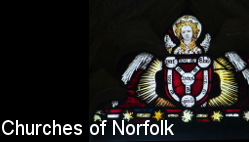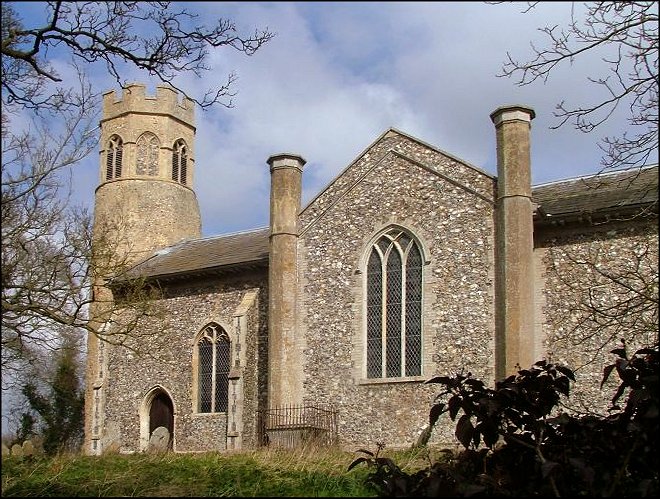
home I index I latest I glossary I introductions I e-mail I about this site
St Mary, Bylaugh

| St Mary,
Bylaugh Now, that's interesting. But what makes it really exciting is that the rebuilding included a complete refurnishing in the manner of the day, a perfectly preserved pre-ecclesiological interior with a three-decker pulpit, box pews, fire places and a harmonium, still without electricity, still as it was when the estate workers sat behind their elders and betters in the years before the new Queen came to the throne. The fire places are set in the north and south walls of the transepts, the pinnacles that flank them cleverly disguised chimneys. The interior is lovingly cared for, not a speck of dirt or damp, and the prettiest altar frontal. Mortlock thought the three-decker pulpit was the best in Norfolk. This must be a beautiful place for evensong at dusk, with the candles alight, and fires crackling in the grates. There is actually a fine medieval survival here, if you have the patience to find it. Halfway along the nave, under the long carpet, is a brass to Sir John and Lady Joan Cursin, dated 1471. It is in beautiful condition, and I particularly like the little dogs at Lady Joan's feet. Her dates are not filled in - perhaps she married again, and is buried elsewhere. I was delighted to discover from Pevsner that Sir John Lombe, who paid for the rebuilding, and who is commemorated by an austere Gothic memorial in the chancel, originally won the Bylaugh estate by gambling for it. I've since been told that the deeds appear to show that this is not true, but what a great story. Lombe died aged 86 in 1817. Bylaugh Hall was rebuilt by his son to the designs of Charles Barry, the co-designer of the Houses of Parliament. Apparently, some of the workers came from Westminster to build the Hall. It was severely damaged by being comandeered and used as a barracks in WWII, and was finally abandoned to the elements in 1952. However, the Hall has recently been brought back to life by the energetic and tender care of the Vince family, and is now in use again as a hotel and for conferences and receptions. Simon Knott, May 2006 |
home I index I latest I glossary I introductions I e-mail I about this site